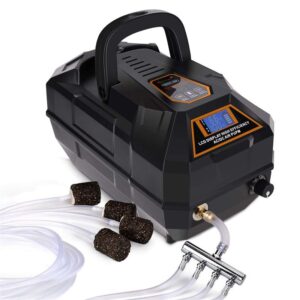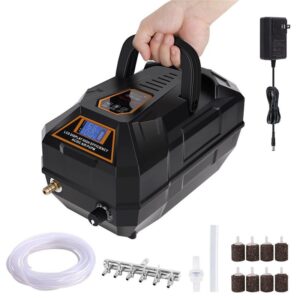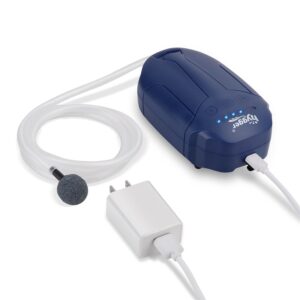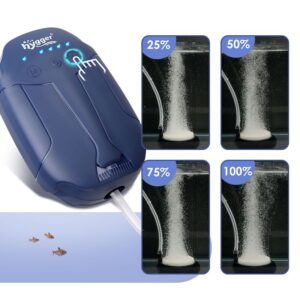Continuous Aerate Air for Outdoor and Power Outages
As an aquarium aerator, an aquarium air pump can oxygenate aquarium water, expel excess carbon dioxide, increase water pressure, and run other aquarium equipment. In this guide, you can gain more insight into air aerating including air pumps for outdoor and pond aeration.
What is the portable mean of an air pump
Portable air pumps feature portability and convenience. Most of them are lightweight. In aquariums, portable air pumps generally are small, battery-powered, or rechargeable, making them suitable for fish transportation, outdoor fishing, power outage, etc.
But how do portable air pumps differ from common air pumps? Actually, the two are different in size, power source, and air output.
| Differences | Portable air pumps | Common air pumps |
| Size | 1. Compact, lightweight, and easily transportable. 2. Typically, smaller, making them convenient for travel or situations where space is limited. |
1. Usually larger. 2. May be designed for stationary use in larger aquarium setups. |
| Power source | Battery-powered or rechargeable, allowing them to operate without a direct power source. | Common air pumps, on the other hand, are typically powered by an electrical outlet and may require a power cord. |
| Air output | 1. Lower air output. 2. Typically used in smaller tank setups or for temporary purposes. |
1. Generally more powerful and capable of providing higher air output. 2. Suitable for larger aquariums or systems that require stronger aeration. |
Do small ponds need an air pump
Air pumps for pond aeration
Whether should you add an air pump to small ponds depends on the size of the pond, the density of aquatic pets, the species, and the number of plants, plus the overall balance of the ecosystem. So, what do air pumps do in small ponds?
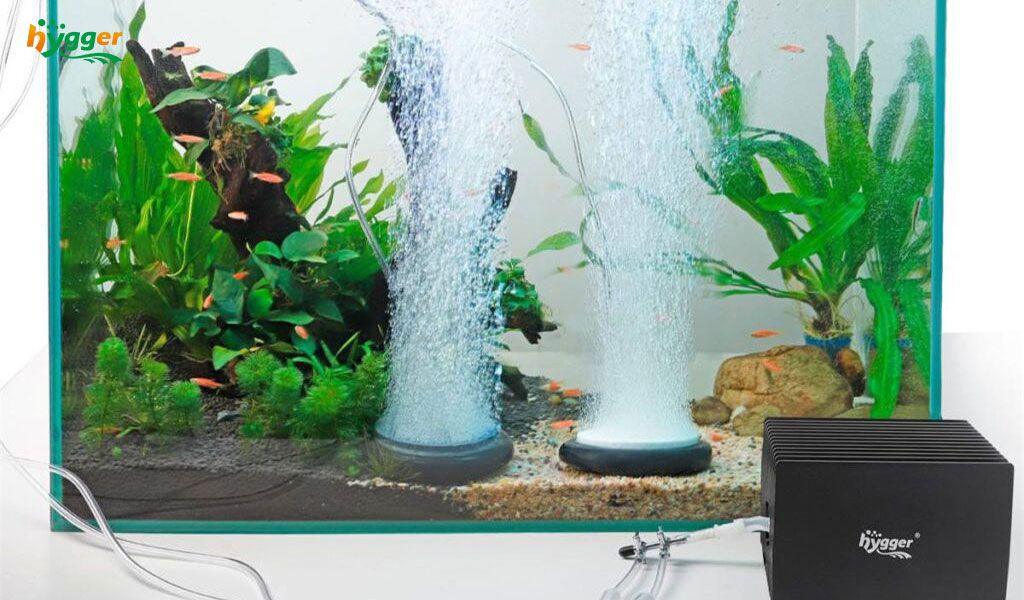
- Oxygenation
An air pump can help maintain adequate oxygen levels in the water, especially in situations where there is limited circulation or stagnant areas. If your small pond lacks natural water movement, such as from a waterfall or fountain, an air pump can be beneficial in oxygenating the water and supporting fish and other aquatic life.
- Fish and livestock
If your small pond contains fish or other livestock that require higher oxygen levels, an air pump can provide the necessary aeration. Fish, particularly in densely stocked ponds, can deplete oxygen levels through respiration and waste production. An air pump can help prevent oxygen deprivation, especially during warm weather or in ponds with limited plant cover.
- Plants and algae balance
Aquatic plants play a vital role in oxygenating ponds by producing oxygen during photosynthesis. If your small pond has a healthy and well-established plant population, an air pump may be less necessary. The plants can contribute to oxygen levels during the day, while an air pump can be used primarily at night when plants do not photosynthesize and release carbon dioxide.
- Water Quality
An air pump can promote water circulation, which helps prevent stagnant areas and reduces the likelihood of stagnant water issues such as algae blooms or mosquito breeding. If your small pond is prone to poor water quality or has limited water movement, an air pump can aid in maintaining better overall water conditions.
The best air pump for a Koi pond
Take a Koi pond as an example, a portable air pump kit is an excellent option. It is ideal for garden small ponds. The portable air pump kit has a 9 levels adjustable air volume control knob. The airflow can be adjusted according to your preference, max of up to 238GPH or 301GPH. Also, it is equipped with a diverter valve, which can link many devices (like 4 or 6 air stones).
When it comes to power outages
Facing power outages, how to supply oxygen to ensure the well-being of your fish and other aquatic inhabitants?
Battery-powered air pump
A battery-powered air pump is an excellent solution for providing temporary aeration during power outages. These portable pumps can be easily set up and connected to an airstone or diffuser in your aquarium. But make sure to have spare batteries or a fully charged rechargeable battery on hand to power the pump.
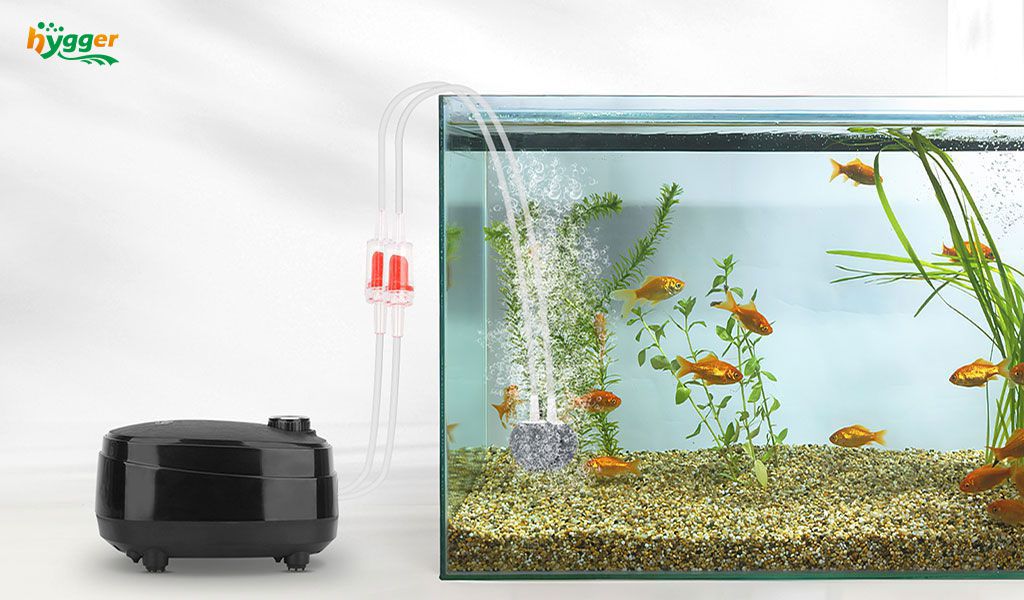
Manual aeration
If you don’t have a battery-powered air pump, manual aeration can be a temporary solution. Gently agitate the water surface using a clean container or your hand. This action helps in gas exchange, allowing oxygen to enter the water and carbon dioxide to escape.
Battery-powered inverter
If you have a larger aquarium setup or multiple tanks, using a battery-powered inverter can be an option. It converts DC power from a battery into AC power, allowing you to run your regular air pump or other essential equipment during power outages. This method requires a suitable battery and inverter setup.
Emergency oxygen supplies
Keep emergency oxygen supplies such as oxygen tablets or liquid oxygen additives designed for aquariums. These products can temporarily increase oxygen levels in the water. Follow the instructions provided with the specific product you choose.
Aside from the methods mentioned above, you can also reduce oxygen expenditure by limiting feeding. Moreover, make sure that the temperature in the aquarium remains stable by avoiding direct sunlight or extreme temperature fluctuations. Keep the tank covered to minimize heat loss. Once power is restored, monitor water parameters and consider water changes if necessary.
Wrap-up
To lessen the threats to fish health, it is recommended to prepare a portable air pump for temporary or emergency use. Once facing power outages, apply the portable air pump to tanks with high density and fish requiring higher oxygen levels.

